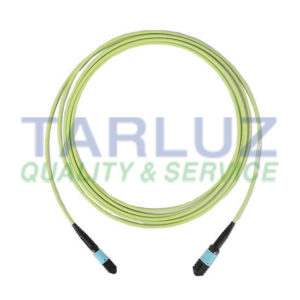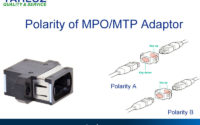OM5: Technology Standard and Data Center Application
Multimode fiber (MMF) has experienced evolution from OM1, OM2, OM3 to OM4 since it entered the market in the 1980s. The effective bandwidth supported has been increasing and the transmission distance is farther.
As people’s demand for high-bandwidth and high-speed networks increases, in order to satisfy users’ access to data centers and improve data center performance, multi-mode fiber requires more diversification of wavelength support. In this context, A new type of fiber optic patch cord OM5 came into being.
The ISO and TIA standardization organizations released the latest wiring standards ISO 11801 3rd and TIA-568.0-D in 2017. The new standard removes the traditional OM1, OM2 multimode fiber optic cable and adds OM5 broadband multimode fiber optic cable. ISO reduced the attenuation of OM5 fiber optic cable from 3.5 dB/km for the previous OM3, OM4 fiber cable to 3.0 dB/km, and increased the bandwidth requirement at 953 nm.

Advantages:
High scalability: OM5 fiber patch cords can combine short-wavelength division multiplexing (SWDM) and parallel transmission technologies in the future, and only require 8-core wideband multimode fiber (WBMMF) to support 200/400G Ethernet.
Compatibility and interoperability: OM5 fiber patch cords support legacy applications like OM3 and OM4 fiber patch cords, and are fully compatible and interoperable with OM3 and OM4 fiber patch cords.

Differences:
Structurally, the OM5 fiber patch cord is no different from the OM4 fiber patch cord, and the OM5 fiber patch cord is compatible with the OM4 fiber patch cord. In addition, there is still a difference between the two, the following comparison between OM5 fiber jumper and OM4 fiber jumper.

Color: The color of the outer sheath of the OM5 fiber patch cord is lime green; the outer sheath of the OM4 fiber patch cord is lime blue.
Wavelengths: The wavelength of the OM5 fiber jumper is generally 850/1300 nm, and at least 4 wavelengths can be supported at one time. The wavelength of the OM4 fiber jumper is generally 850/1310 nm, and only one wavelength can be supported at a time.
Transmission distance: In the case of the same wavelength, the transmission distance of the OM5 fiber jumper is generally longer than that of the OM4 fiber jumper.
Transmission rate: The transmission rate of the OM5 fiber jumper is 40Gb/s and 100Gb/s; and the transmission rate of the OM4 fiber jumper is 10Gb/s, 40Gb/s, 100Gb/s.
Effective Mode Bandwidth (EMB): At 850 nm, the EMB of the OM5 fiber patch cord is 6000 MHz.km, while EMB of the OM4 fiber patch cord is 4700 MHz.km. The effective mode bandwidth of OM5 jumper is much higher than the OM4 fiber jumper.
How to choose:
The performance of the OM5 fiber patch cord is much higher than the OM4 fiber patch cord. As a choice for future data centers, OM5 fiber patch cords surpass OM4 fiber patch cords in terms of effective mode bandwidth (EMB), which means providing room for Ethernet and giving the data center greater life. However, when the transmission rate is less than 40Gb/s, considering the cost, choosing the OM4 fiber patch cord is the best solution.


